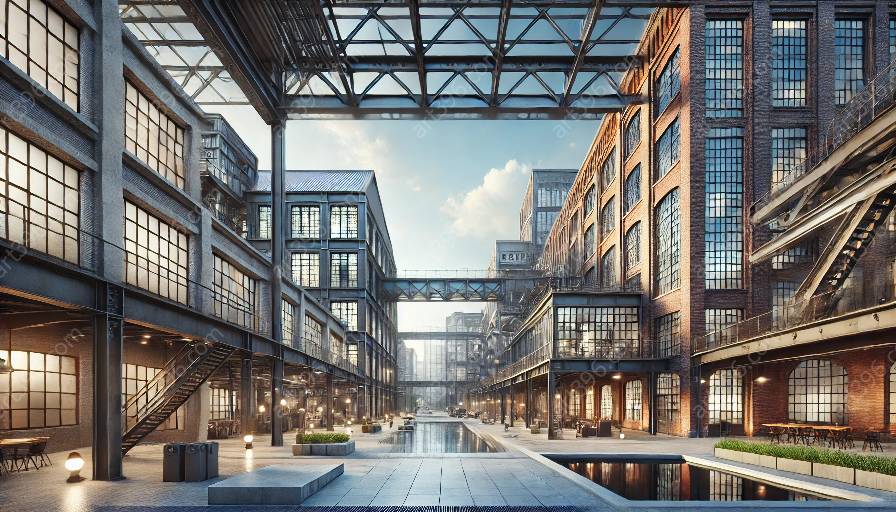Industrial architecture plays a critical role in shaping our built environment, with a focus on designing and constructing facilities for manufacturing, production, and industrial processes. As the global community increasingly embraces environmental sustainability, there is a growing emphasis on incorporating sustainable materials and construction techniques in industrial architecture. This movement towards eco-friendly practices not only reduces the environmental impact of industrial facilities but also enhances overall efficiency and long-term cost savings.
The Importance of Sustainable Design in Industrial Architecture
Sustainable design in industrial architecture encompasses a wide range of considerations, from the selection of materials to the implementation of construction techniques that minimize waste and energy consumption. By integrating sustainable principles into the design and construction process, industrial architects can create facilities that are not only environmentally responsible but also more resilient and adaptable to changing needs and technological advancements.
Integration of Sustainable Materials
One of the fundamental aspects of sustainable industrial architecture is the use of eco-friendly materials. These materials are sourced and manufactured in a manner that reduces environmental impact, conserves natural resources, and minimizes waste. Recycled steel, reclaimed wood, and engineered lumber are examples of sustainable materials that are commonly used in industrial construction. These materials not only offer environmental benefits but also contribute to the creation of unique and aesthetically appealing industrial spaces.
Recycled Steel
Recycled steel is a versatile and sustainable material that is widely used in industrial architecture. By utilizing recycled steel, architects and builders can reduce the demand for raw materials and energy-intensive production processes associated with traditional steel production. Additionally, recycled steel offers excellent structural integrity and durability, making it an ideal choice for industrial facilities that require robust building materials.
Reclaimed Wood
Reclaimed wood is another sustainable material that is favored for its distinctive aesthetic qualities and environmental benefits. By repurposing wood from old structures or salvaging timber from sustainable sources, industrial architects can incorporate natural warmth and character into their designs while promoting responsible forest management and reducing deforestation.
Engineered Lumber
Engineered lumber, such as laminated veneer lumber (LVL) and parallel strand lumber (PSL), is engineered from sustainably harvested wood fibers and adhesives. These engineered wood products offer high structural performance and dimensional stability, providing architects with versatile and eco-friendly alternatives to traditional lumber for structural and decorative applications.
Adoption of Sustainable Construction Techniques
In addition to utilizing sustainable materials, industrial architecture embraces innovative construction techniques that minimize environmental impact and enhance energy efficiency. These techniques include modular construction, prefabrication, green building practices, and energy-efficient systems.
Modular Construction
Modular construction involves the off-site fabrication of building components and modules, which are then assembled on-site. This approach reduces material waste, construction time, and site disruption, resulting in more efficient and sustainable construction processes for industrial projects. Modular construction also allows for greater precision and quality control, leading to enhanced structural integrity and performance.
Prefabrication
Similar to modular construction, prefabrication involves the assembly of building elements off-site before they are transported and installed on the construction site. Prefabricated components, such as wall panels, roof trusses, and floor systems, are built in controlled factory environments, contributing to reduced material waste, improved construction speed, and minimized on-site disturbances. By embracing prefabrication, industrial architecture can achieve higher levels of sustainability and construction efficiency.
Green Building Practices
Green building practices encompass a range of strategies and technologies that prioritize resource conservation, indoor environmental quality, and occupant comfort. Industrial architects integrate green building principles by optimizing insulation, implementing passive design strategies, utilizing natural ventilation, and incorporating renewable energy systems, such as solar panels and wind turbines. These practices contribute to the creation of industrial facilities that are energy-efficient, environmentally responsible, and conducive to the well-being of occupants and workers.
Energy-Efficient Systems
Energy-efficient systems play a crucial role in sustainable industrial architecture, as they contribute to the reduction of energy consumption and operational costs. This includes the integration of energy-efficient lighting, HVAC (heating, ventilation, and air conditioning) systems, and building automation technologies. By implementing advanced energy management solutions, industrial facilities can optimize their energy usage and contribute to a greener and more sustainable built environment.
The Future of Sustainable Industrial Architecture
As the demand for sustainable practices and environmental stewardship continues to grow, the field of industrial architecture is poised to embrace even more innovative and progressive approaches to sustainability. From the exploration of new bio-based materials to the advancement of digital design and construction technologies, the future of sustainable industrial architecture holds tremendous potential for creating resilient, efficient, and environmentally conscious industrial facilities that align with the principles of sustainable development and responsible stewardship of natural resources.
Conclusion
Industrial architecture's integration of sustainable materials and construction techniques represents a significant step towards creating built environments that are not only functional and aesthetically compelling but also environmentally responsible and sustainable. By prioritizing the use of sustainable materials and embracing innovative construction techniques, industrial architects are redefining the industry's impact on the natural environment and paving the way for a more sustainable and resilient industrial infrastructure.





























































